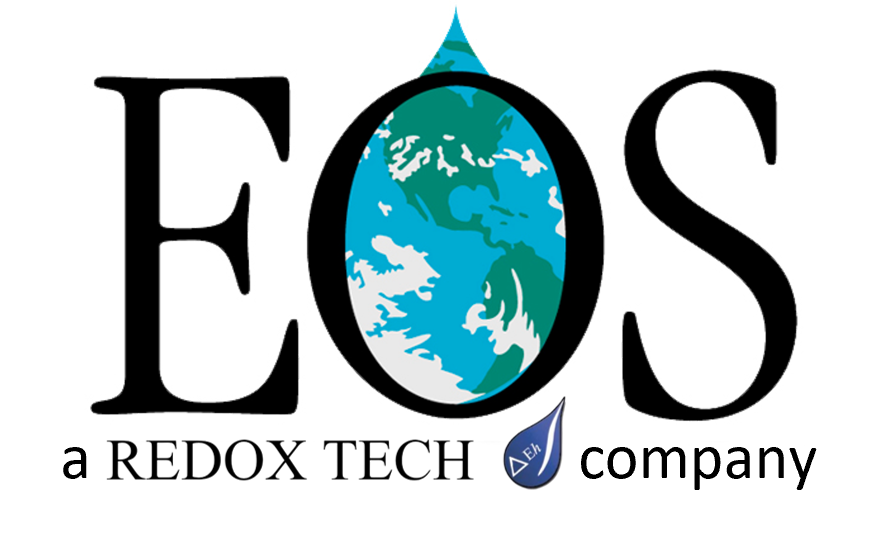Design and Evaluation of in situ Bioremediation Applications
Design and Evaluation of in situ Bioremediation Applications Emulsified oil substrate (EOS®) has been injected at thousands of sites to serve as a long-term electron donor source for treating chlorinated solvents, chromium, nitrate, explosives, and other contaminants by enhanced biological reductive processes. This remedial method can result in very effective site clean-up of contaminated groundwater. [...]
Fate of Vinyl Chloride in Aquifers
The Fate of Vinyl Chloride in Aquifers Vinyl Chloride (VC) is a proven human carcinogen and a major risk factor in many contaminated aquifers. When present above the maximum concentration level (MCL) of 2 ppb, sites are unable to close and require continued remediation and monitoring. Knowing the pathways and mechanisms that contribute to VC [...]
EOS Remediation Design Tool
Introduction of the New EOS Design Tool EOS Remediation developed a design tool to assist environmental professionals in the proper design of an EOS® enhanced anaerobic bioremediation project. The EOS® Design Tool uses science-based, site-specific data and design criteria, literature reference values, and potential safety factors to calculate the quantity of EOS® product required for [...]
Bioaugmentation: When, Why and How
Bioaugmentation: When, Why and How Bioaugmentation can be a powerful tool in site remediation. Often consultants do not consider this remedial additive because they are not sure what they are getting or how to properly apply it to their site. In this webinar presentation by Brad Elkins, PG of EOS Remediation you will learn the [...]
QuantArray™ and Enhanced Biodegradation
A qPCR Array (QuantArray™) Demonstrates Biodegradation at Petroleum Impacted Sites Petroleum products are complex mixtures of hundreds of aliphatic, aromatic, and cyclic compounds. Even for a class of related contaminants like BTEX, biodegradation can proceed by different pathways making comprehensive assessment of biodegradation potential difficult. A qPCR array (QuantArray™) cost-effectively addresses these issues by providing [...]
Electron Acceptor Selection for Enhanced Bioremediation of Non-Chlorinated Hydrocarbons
Electron Acceptor Selection for Bioremediation of Non-Chlorinated Hydrocarbons Replenishment of electron acceptors in the subsurface is a common method to stimulate biodegradation of non-chlorinated hydrocarbons in groundwater. Two widely used products are calcium-based peroxides for aerobic degradation and sulfate-based salts for anaerobic degradation. What design parameters should a consultant consider in selecting from multiple electron [...]
Principles and Practices of Bioremediation
Principles and Practices of Bioremediation For project managers and decision-makers cleaning up groundwater contamination, this video is an introduction to the basics of bioremediation. Learn how bioremediation can be an effective and sustanable solution for your contaminated property using EOS Remediation technologies. This webinar is made available through EOS Remediation, LLC. For over a decade [...]
Bioaugmentation Cultures in low pH Aquifers
Developing Bioaugmentation Cultures for Chloroethene Remediation in Low pH Aquifers Developing Bioaugmentation Cultures for Chloroethene Remediation in Low pH Aquifers David L. Freedman, Ph.D. Clemson University, Clemson, SC This webinar is made available through EOS Remediation, LLC. For over a decade EOS Remediation has been the leading provider of in situ bioremediation products that reengineer [...]
Managing Aquifer pH
Aquifer pH Adjustment with Alkaline Colloidal Suspension Aquifer pH has a deciding impact on the transport, degradation, and transformation of contaminants in situ. At many field sites, aquifer pH is naturally acidic and base addition is required to generate optimal pH conditions for contaminant transformation. View EOS Remediation's webinar presentation to understand better how to [...]
Organic Substrate Selection
Organic Substrate Selection There are a variety of different organic substrates available to stimulate in-situ anaerobic bioremediation processes. Essentially all these materials ferment to hydrogen (H2) and acetate and can support reductive dechlorination. However, there are some critical differences. This webinar will provide an overview of different substrates and how chemical composition impacts substrate performance. [...]










